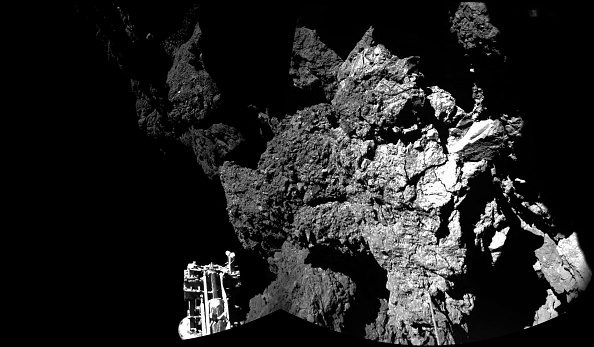-
Tips for becoming a good boxer - November 6, 2020
-
7 expert tips for making your hens night a memorable one - November 6, 2020
-
5 reasons to host your Christmas party on a cruise boat - November 6, 2020
-
What to do when you’re charged with a crime - November 6, 2020
-
Should you get one or multiple dogs? Here’s all you need to know - November 3, 2020
-
A Guide: How to Build Your Very Own Magic Mirror - February 14, 2019
-
Our Top Inspirational Baseball Stars - November 24, 2018
-
Five Tech Tools That Will Help You Turn Your Blog into a Business - November 24, 2018
-
How to Indulge on Vacation without Expanding Your Waist - November 9, 2018
-
5 Strategies for Businesses to Appeal to Today’s Increasingly Mobile-Crazed Customers - November 9, 2018
Rosetta Mission: Building Blocks of Life Found on Comet
Scientists say the Philae space probe has gathered data supporting the theory that comets can serve as cosmic laboratories in which some of the essential elements for life are assembled. COSAC analysed samples entering tubes at the bottom of the lander kicked up during the first touchdown, dominated by the volatile ingredients of ice-poor dust grains revealing a suite of 16 organic compounds comprising numerous carbon and nitrogen-rich compounds, including four compounds – methyl isocyanate, acetone, propionaldehyde and acetamide – that have never before been detected in comets.
Advertisement
Altobelli goes on to say, “The implications of these measurements, and in particular the fairly homogeneous, very porous structure of the interior, will help constrain the formation models of planetesimals in the solar nebula, by a better understanding of the accretion processes”, in reference to how such planetary building blocks could come together within the early days of our solar system.
Researchers published the findings derived after analyzing the Philae data in an article published Thursday in the journal Science.
Philae has two instruments used to study gas composition, COSAC and Ptolemy. A series of experiments was programmed to begin once Philae landed on the comet but once the harpoons failed to fire and it bounced of the comet, most of the experiments were performed during the two hours above the comet.
ESA probe Philae has found organic compounds on Comet 67P.
But their existence “could have played a key role in fostering the formation” of amino acids, sugars and nucleobases – the ingredients for life, said the European Space Agency, which launched the Rosetta orbiter and its probe.
Ptolemy on the other hand sampled ambient gas entering tubes at the top of the lander and detected the main components of coma gases – water vapour, carbon monoxide and carbon dioxide, along with smaller amounts of carbon-bearing organic compounds, including formaldehyde.
Advertisement
Proteins, fundamental to living organisms, are made from long chains of amino acids, and the simplest one, glycine, was detected in material collected from the tail of another comet by NASA’s Stardust mission a few years ago. Since July 25, Rosetta has moved into a position where it can explore Comet 67P’s southern landscape in the run-up to Perihelion, its closest point to the Sun, and from there it will be unable to communicate with Philae anyway.




























